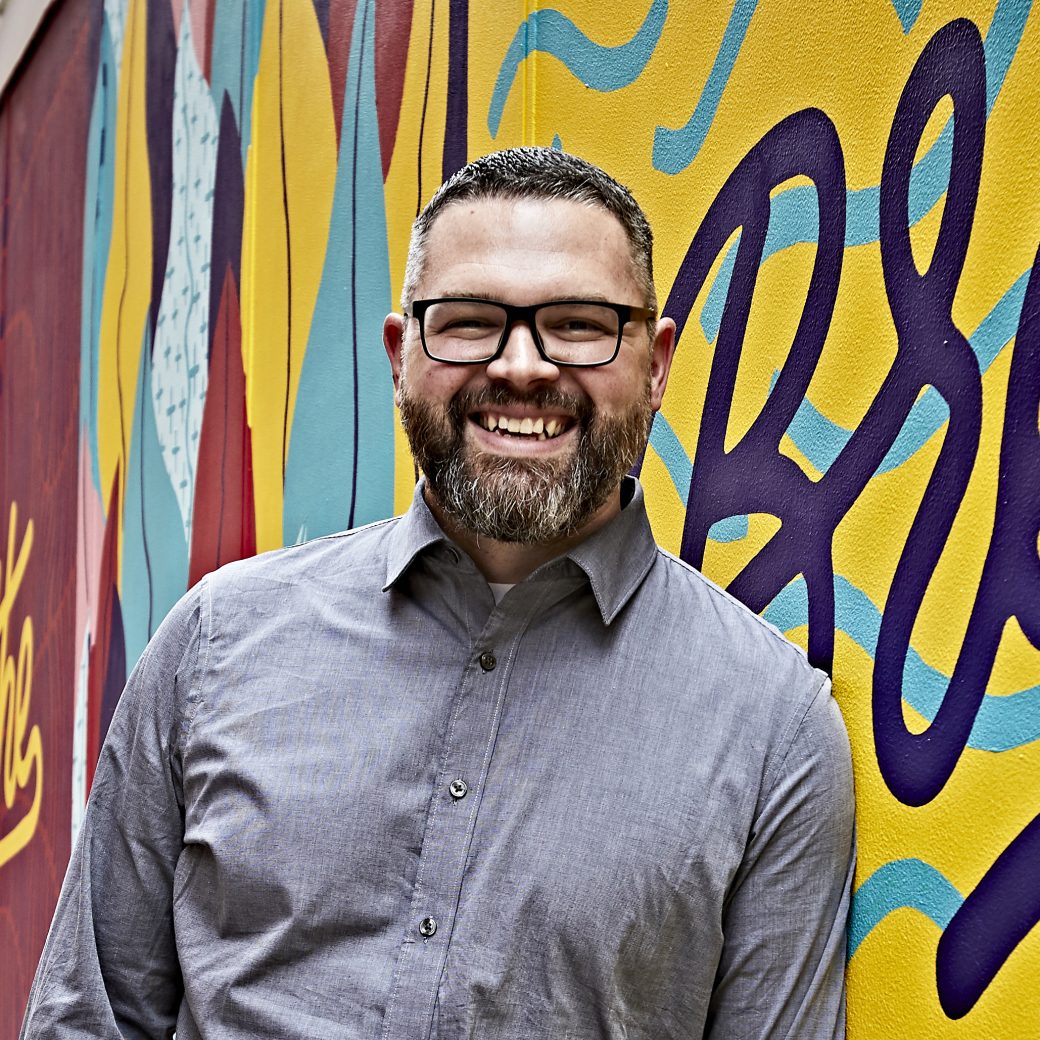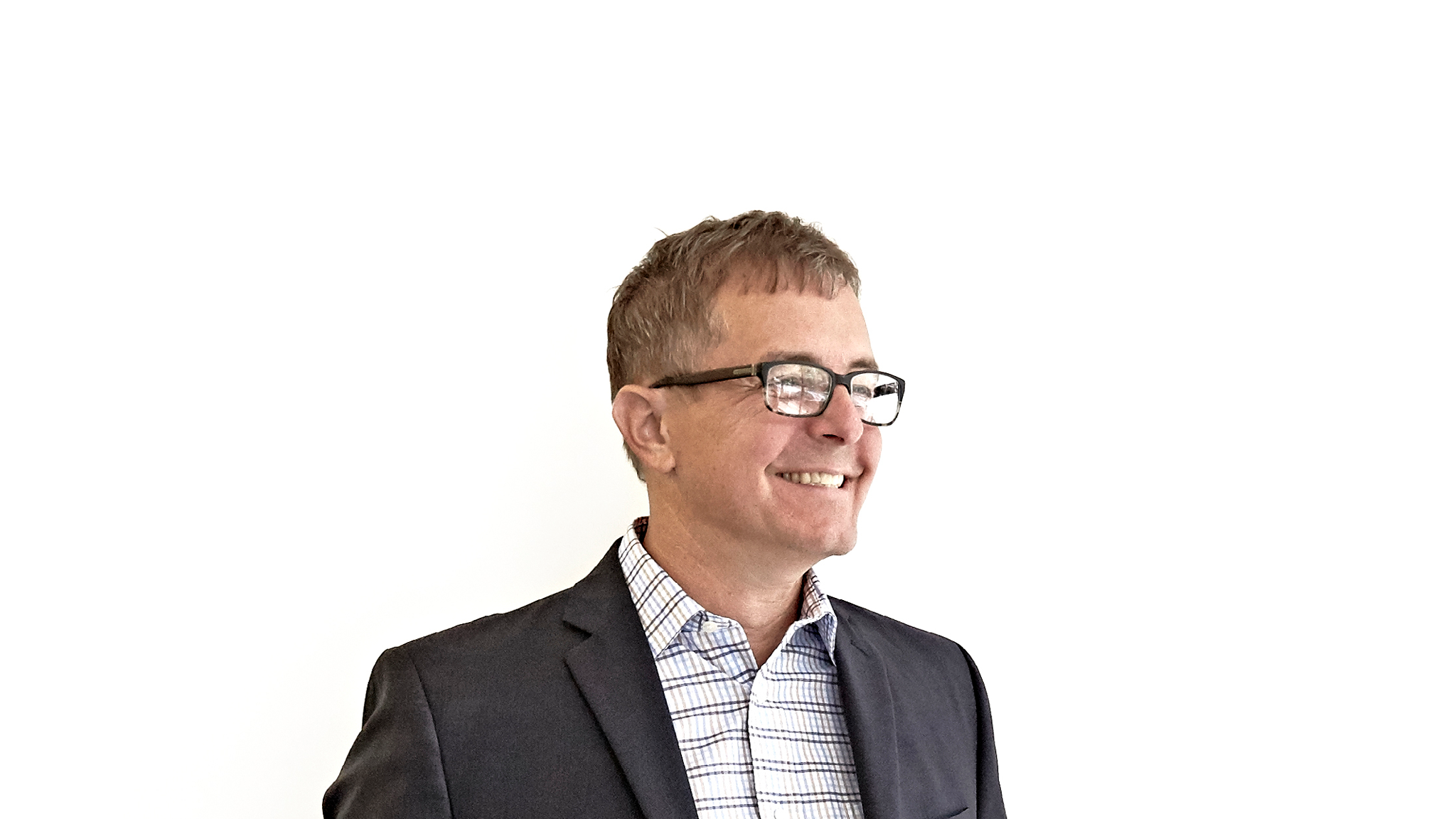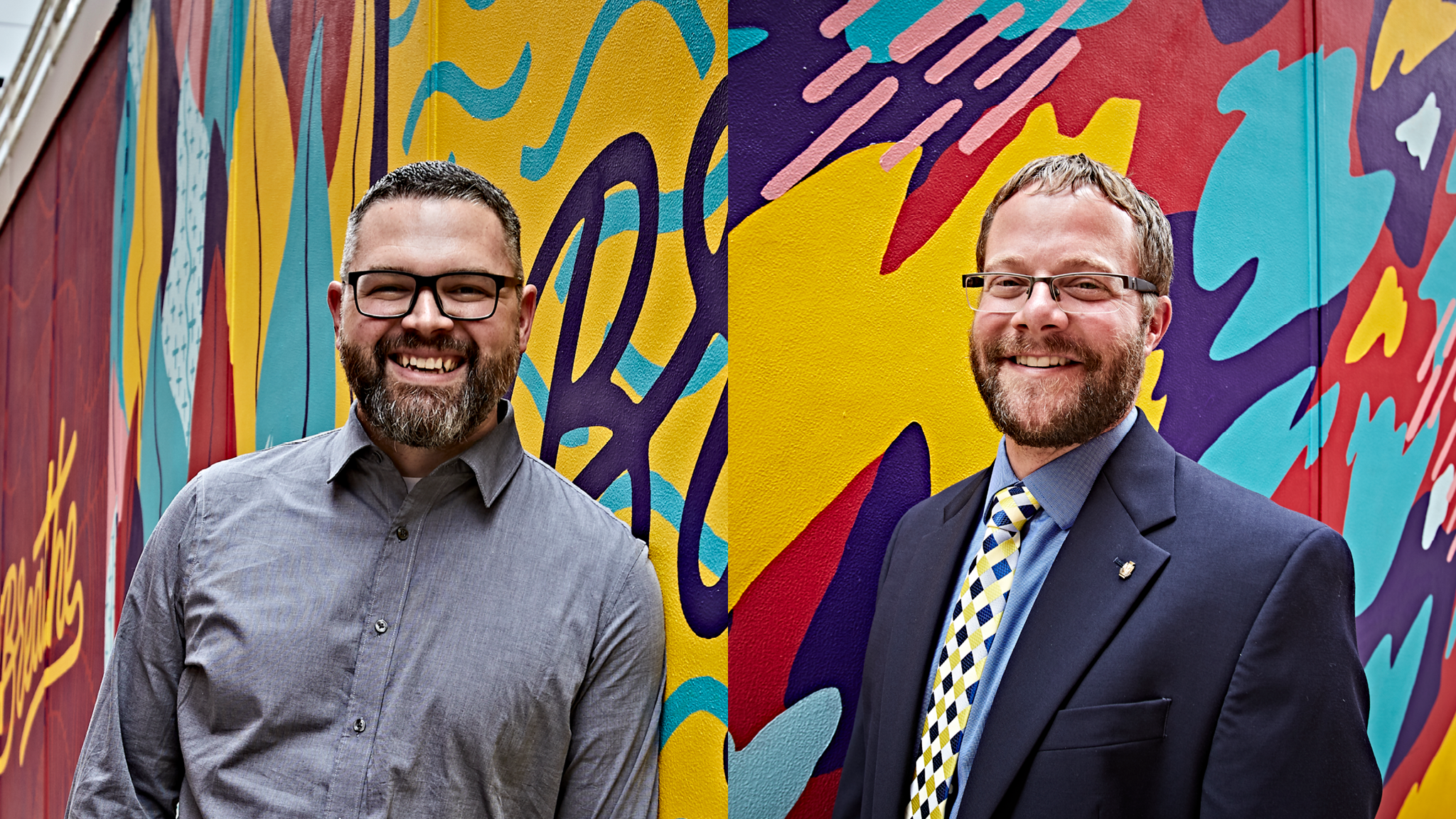MKM Principal Dodd Kattman received the American Institute of Architects Juliet Peddle Award at the recent AIA Ohio Valley Region Convention.
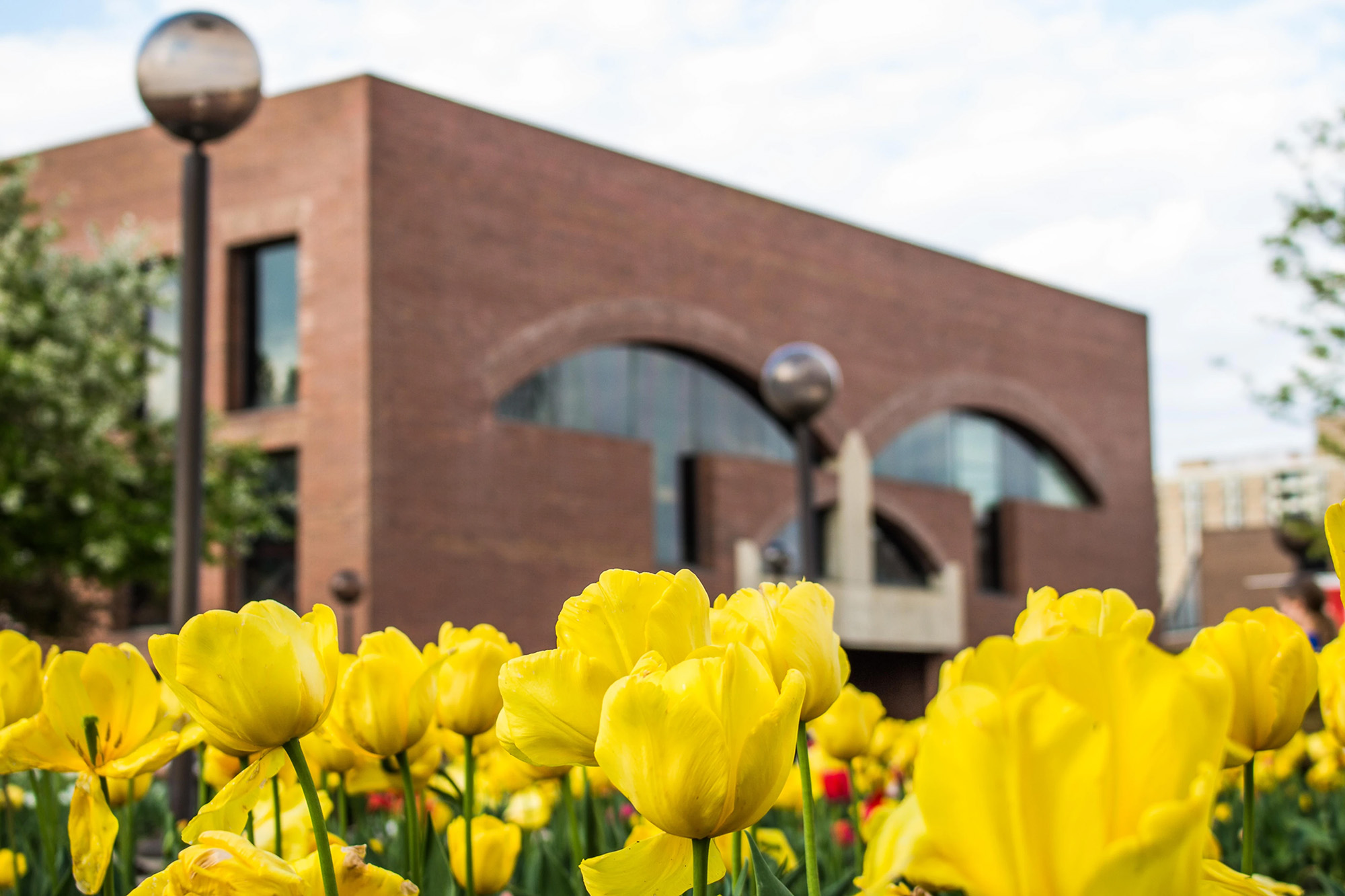
This story originally appeared in Fort Wayne Magazine. Photos courtesy of Arts United.
We often go to great lengths to show our support for the creative sector, and nothing symbolizes our dedication to creativity like the story of the Arts United Center – a story that stars a socially awkward architect that we invited into our community in 1960 to help us become a better version of ourselves. It’s a story that illustrates the magic of our arts campus, the audacity of its vision, and the impact it continues to have on our city.
To fully appreciate the Arts United Center, it’s important to understand the context surrounding Louis Kahn’s time in Fort Wayne. Inspired by the recent construction of the Lincoln Center for the Performing Arts, the Fort Wayne Fine Arts Foundation (now Arts United of Greater Fort Wayne), one of the country’s first united arts organizations, interviewed some of the most important architects in the world to envision a new arts campus in downtown Fort Wayne. Invitations went to Ludwig Mies van der Rohe, Minoru Yamasaki, Edward Durell Stone, Eero Saarinen, and lastly to Phillip Johnson, who claimed to be too busy to respond and suggested Kahn’s name to the committee for consideration.
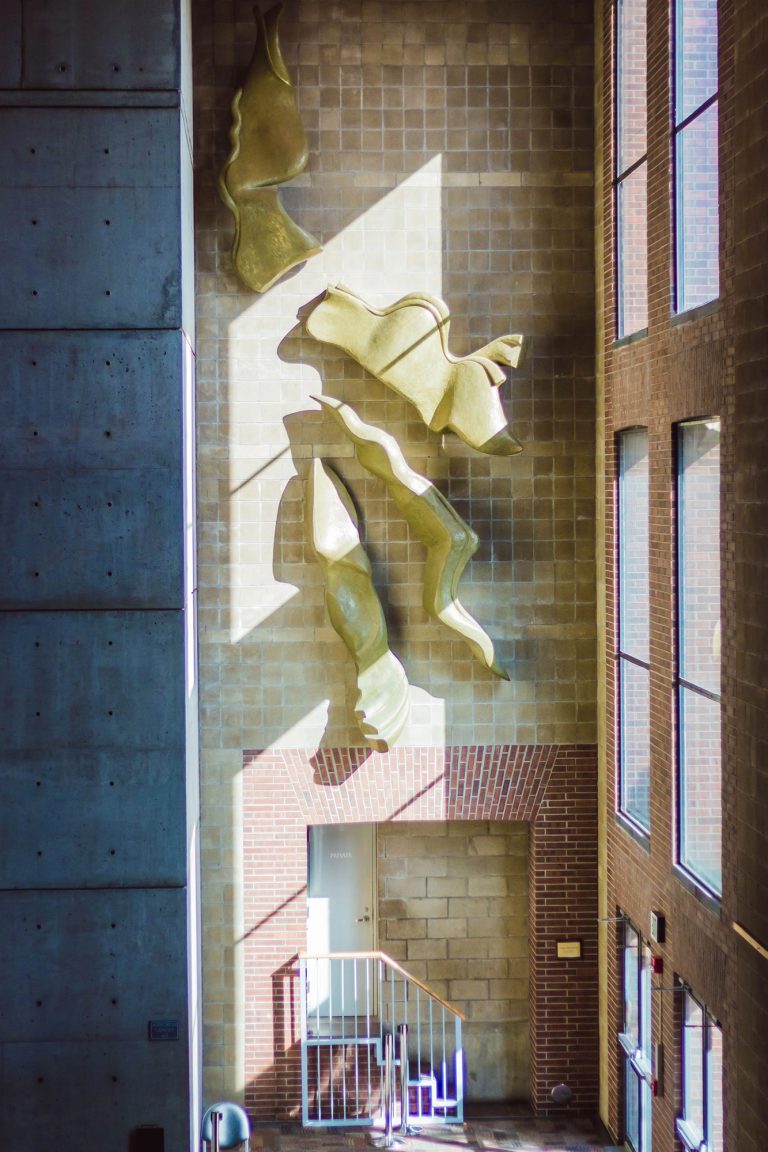
Kahn’s notoriety during this time period cannot be overstated. As he visited our community, as he designed our campus, and as he lectured in the completed rehearsal hall during the building’s open house, he was, by a large margin, the most important architect in the world.
Immediately prior to being awarded the Fort Wayne commission in February of 1961, he completed the construction of the Salk Institute for Biological Studies (1959) and the Indian Institute of Management (1961). He then would go on to complete the National Assembly Building of Bangladesh (1962), the Phillips Exeter Library (1965), and the Kimbell Arts Museum (1966) while working to complete the Arts United Center in 1973.
In a span of seven years, Kahn completed the construction of five of the greatest buildings of the twentieth century. For an architect that is often criticized for having so few projects realized, it’s a feat that may never be duplicated.
During the construction of the Arts United Center the American Institute of Architects as well as the Royal Institute of British Architects awarded him with the prestigious Gold Medal, the highest awards offered by the architectural profession. Then, tragically, four months after our building opened, Kahn was found dead in a train station bathroom on his way home from a trip to India.
So, what brought Kahn to Fort Wayne? Kahn loved beginnings. He adored the start of a new problem. And the task our community presented him was a wonderfully complicated problem to solve.
In her recent book, You Say to Brick: The Life of Louis Kahn, Wendy Lesser notes that, “With many architects – and Louis Kahn was certainly among them – the interplay between these constantly arising difficulties and the architect’s own fertility of imagination is an essential part of the process. Kahn was not an isolated genius who came up with ideas and then supervised their exact construction. He was a collaborator of extraordinary abilities.”
Kahn indeed was an avid collaborator; however, in partnership with clients and colleagues, he was not solely focused on the projects he was commissioned to design but on a broader intellectual journey in which he was constantly seeking answers – answers he seemed to have found in Fort Wayne.
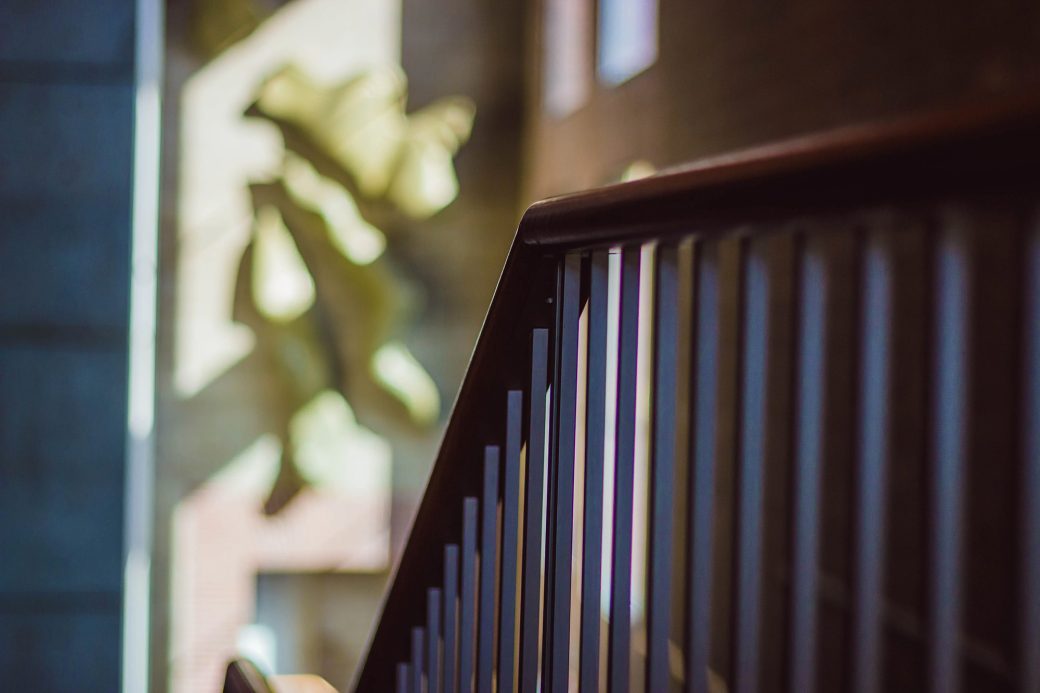
The request for proposals Fort Wayne issued to each architect asked for assistance in envisioning a multi-phased, multi-building arts campus unlike anything anyone had ever seen. The equation included a performing arts theater, art museum, reception center, office building, lecture hall, art school, ballet school, historical museum, and music hall. At the beginning, the project had numerous moving parts, including the budget, depending on who you asked.
In describing our project during a lecture in 1965 at Yale University, Kahn noted that, “All this had to be in one bundle on one piece of land, and I had to say what it would cost. This is a very ticklish situation for me because I wanted them to want the project first, and then talk about the cost. I knew the plans exceeded very much the cost that the committee had in mind.”[1]
For Kahn, the project and the costs were, in some ways, two different problems to solve. One was an issue of architecture and the other of fundraising. It was an instinct he would battle with his entire career. “A great building,” he would say, “must begin with the unmeasurable, must go through measurable means when it is being designed, and in the end, must be unmeasurable.”[2]
His dedication to understanding the responsibility architecture had in producing an emotional connection between space and time is what set him apart from his peers and, coincidentally, what guided his approach during his time in Fort Wayne. It was a process that wasn’t without its own challenges.
When his first concept for the center was presented in 1965, Kahn estimated the project costs at $20 million. Considering this was approximately $156 million today and almost ten times the assumed project budget.[3]
As the budget and scope continued to be revised, moving from ten buildings to eventually one single structure, Kahn was willing to compromise, but he kept fighting for the original vision. His reluctance wasn’t due to an unwillingness to produce different options for his client, but because he was hesitant to piecemeal revisions to established design solutions; this is a common instinct for creative geniuses. If the variables for the problem changed, Kahn didn’t want to revise the solution. He wanted to start over. And, throughout his career, he started over a lot. In his mind, it was the only way to ensure a responsible solution would be developed.
This dedication to beautiful solutions can be seen in the minds of individuals like Newton, Einstein, Descartes, and Kahn. These people intimately value, above all things, the importance of asking the right question before considering a viable answer. “If I had an hour to solve a problem,” said Einstein, “I’d spend fifty-five minutes thinking about the problem and five minutes thinking about the solution.” The careers of these individuals dedicated themselves to a constant pursuit of a universal law, a single equation that would simplify the way the world works. For Einstein it was relativity; for Kahn it was something he called “volume zero.”
Kahn had an eight-volume set of books summarizing the history of England. He frequently claimed that the first chapter of the first volume was the only one that interested him, and he wished desperately he could read volume zero instead. This notion was rooted in a desire to consider a pre-historic context. Architecturally speaking, this idea of “volume zero” was a search for the essence of form, one that predated modern architecture and, in effect, modern man.
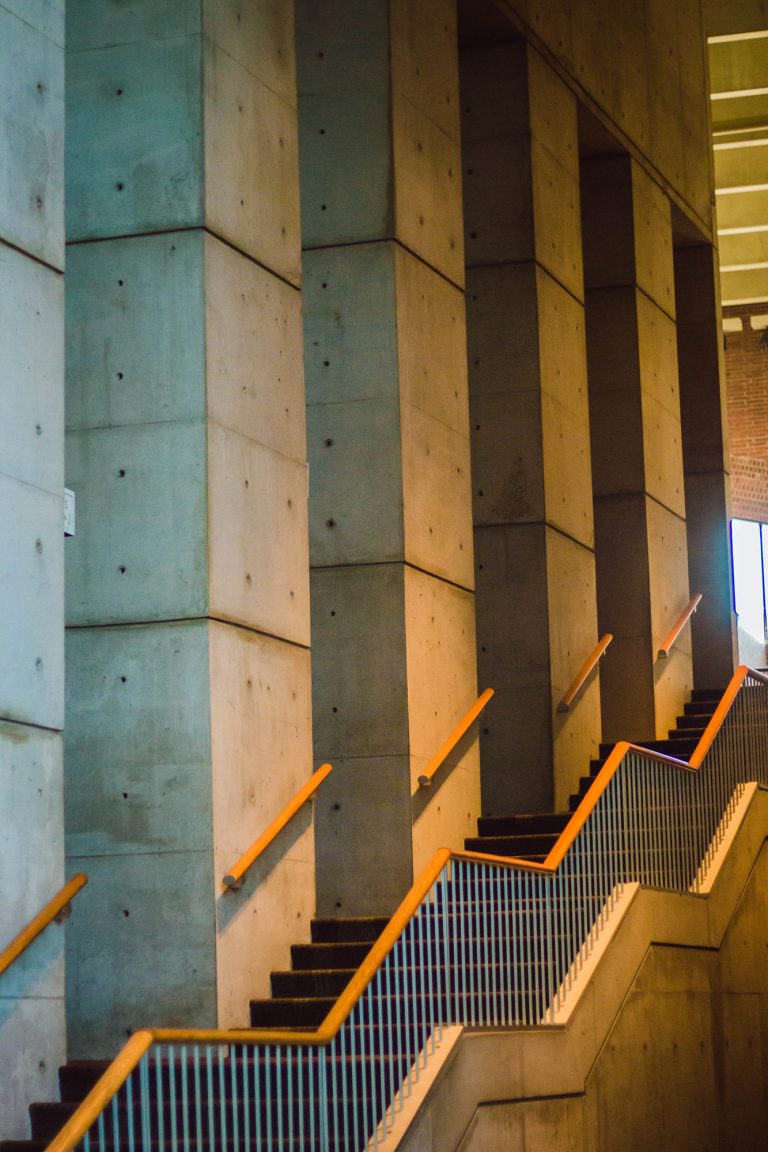
“History could not have started in the places they speak of.” Kahn said. “History preceded this; it just is not recorded. The beauty of architecture is that it deals with the recessions of the mind, from which comes that which is not yet said and not yet made.”[4]
This singular idea is the framework on which Kahn’s portfolio of work rests. You see it in everything he produced. His ongoing obsession with this approach was not simply a hypothetical search for a reduction in form (circles, squares, brick, concrete, etc.), it was a pursuit towards a reduction in intrusion. How much could you do with as little as possible? How far could you starve the pallet and still evoke the appropriate emotion or response? And while his buildings are often criticized for being cold or uninviting, Kahn was not concerned with architecture as sculpture, but with architecture as experience – a phenomenon that cannot be evaluated passively.
To appreciate his buildings requires active participation. The Arts United Center asks you to sit within it long enough to see the sun move through its gallery, to hear children gasp at the volume of its space, or to feel obligated to touch its brick as you walk pass. Kahn saw these buildings as a canvas for the natural world, one that was dedicated to servicing humanity at its fundamental core.
The beauty of the design Kahn conceived for Fort Wayne (his only performing arts building) starts with the notion that our building is perhaps the purist response to his “volume zero” philosophy – one that echoed the pre-historic instincts of basic human nature. Ironically, it also might be the very reason it is so easily dismissed.
This building is not simply an icon for expression, it is a symbol for our sense of community. Kahn reminded us that, “Human agreement is a sense of rapport, of commonness, of all bells ringing in vision – not needing to be understood by example but felt as an undeniable inner demand for presence. It is an inspiration with the promise of the possible.”[5] And this “promise of the possible” is where we find ourselves again today.
The complexity of this building, the intricacies of this strategy, is not necessarily reliant on the tangible construction of the space, but in its purposeful existence as an institution. It’s a solution that is inspired by a romance with the art of expression by both the city and the citizen.
“The sanctuary of art – sort of the ambiance of a man’s expressiveness – has an outlet,” Kahn said. “It is my belief that we live to express. The whole motivation of presence is to express. And what nature gives us is the instrument of expression which we all know as ourselves, which is like giving the instrument upon which the song of the soul can be played.”[6] In this capacity, the role of the institution is critical. It’s a role that cannot survive without courageous leadership and a responsibility that should not be undervalued as our community looks to the future.
The Arts United Center is the materialization of a wonderful journey – a 50-year-old story of a community’s bold vision and its lively relationship with one of the world’s greatest architects.
The building Kahn designed for us represents a culmination of ideas that he had explored throughout his career. It epitomizes his constant pursuit for perfection and speaks to the philosophical questions he was desperately trying to answer. It showcases how a platform for creative expression can unify a community. At the same time, the solution he provided us is uniquely Fort Wayne.
The building he gave us is, in so many ways, a reflection of what makes our community special. It is strong, purposeful, authentic, unapologetic, understated, resilient, honest, and beautiful – beautiful in a way that only we might understand. And in that way, in that moment, it’s perfect.
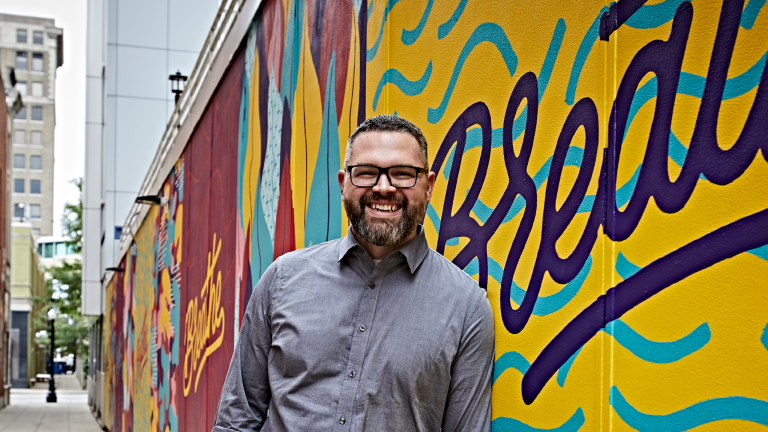
By Zachary R. Benedict, Principal
[1] Louis Kahn, “Lecture at Yale University (1963),” in Louis Kahn: Essential Texts, ed. Robert Twombly (New York: W. W. Norton & Company, 2003), 163.
[2] Louis Kahn, “Form and Space,” in Louis Kahn: Essential Texts, ed. Robert Twombly (New York: W. W. Norton & Company, 2003) 69.
[3] Brown, Louis Kahn in the Midwest.
[4] John Lobell and Louis I. Kahn, Between Silence and Light: Spirit in the Architecture of Louis I. Kahn (Boulder: Shambhala, 1979), 54.
[5] Kahn, “Silence and Light (1968, 1969),” 256.
[6] Louis Kahn, “Silence and Light (1968, 1969),” in Louis Kahn: Essential Texts, ed. Robert Twombly (New York: W. W. Norton & Company, 2003), 237.
Note: This article was originally written for Fort Wayne Magazine.
